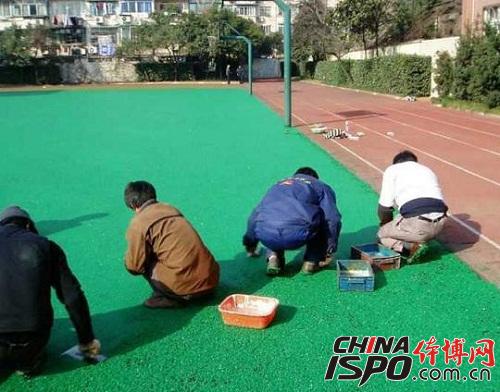When a plastic running track requires renovation, there are typically two main reasons. The first is that the track has reached the end of its service life and can no longer provide safe and effective use. Continuing to use it may pose risks to users. The second reason is damage caused by improper use, such as heavy pressure, accidental damage from sharp objects, or burns from cigarette butts.

**Steps for Plastic Track Renovation**
The renovation process begins with a thorough on-site inspection by technical personnel to assess the condition of the track. Minor damage can often be fixed with a simple resurfacing, while more severe damage may require restoring the base layer. Here’s a detailed breakdown of the renovation steps:
**1. Site Cleaning**
Before any work begins, the site must be thoroughly cleaned to ensure proper adhesion of the new surface. This includes removing dirt, debris, and loose materials. Techniques include using a broom, hair dryer, or high-pressure water to clean the area. Trees and plants around the track should be trimmed in advance, and the construction area should be secured to prevent unnecessary foot traffic.
**2. Repair Work**
This step involves identifying and repairing cracks, delamination, or other structural issues. Special tools are used to remove damaged sections, and the base is sealed with a single-component plastic adhesive. Materials are mixed in a controlled environment to avoid contamination and ensure even application.
**3. Full Back Covering**
After repairs, the entire surface is coated to restore its appearance and functionality. Warning signs are placed to keep non-workers away, and protective measures are taken for nearby sports facilities. Raw materials are prepared and applied carefully, ensuring even coverage and proper drying time.
**4. Surface Preparation**
The area is laid out according to the project plan, with attention to power supply, material access, and ground conditions. Tools and machinery are checked for optimal performance, and all materials are measured and mixed precisely to meet the required specifications.
**5. Surface Coating**
Once the base is ready, the top layer is applied using specialized equipment. EPDM powder and fine material are mixed with an adhesive and sprayed evenly across the surface. The coating is applied in two passes, with each layer being at least 1.5mm thick to ensure durability and uniformity.
**6. Marking and Positioning**
After the surface is dry, the track markings are re-applied following IAAF standards. This includes setting up reference points, marking lines with special polyurethane paint, and ensuring that the lines are clear, straight, and free of seams or irregularities.
**7. Final Cleanup and Handover**
Before leaving the site, all materials are removed, and the finished track is protected to prevent damage. A manual is provided to the owner, detailing maintenance and usage guidelines. The renovated track is ready for use after 7–10 days of curing.
Renovating a plastic running track is a detailed and multi-step process that ensures safety, performance, and longevity. Whether due to aging or damage, proper maintenance and timely renovation are essential to keeping the track in optimal condition.
Flower Embroidery Handkerchief,Flower Cotton Embroidery,Cotton Embroidered Handkerchief,Embroidered Wedding handkerchief
Fashiontex Industries Ltd , https://www.fashiontexjs.com
